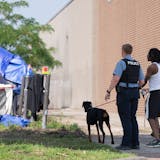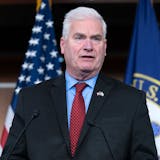As an infectious disease specialist at the Mayo Clinic, Dr. Jack O'Horo is an expert on how to safely create a "COVID bubble" — a small, restricted group of people who visit each other's homes mask-free and spend time together without keeping a 6-foot distance.
When he formed his bubble, the Rochester doctor's closest friends didn't make the cut, but three of his son's playdates did.
He made the selections "partly because it [the bubble] has to stay manageable, and partly because there's not that many people who are excited about having a kid whose dad is an infectious disease doc in their bubbles," he said.
As a pandemic winter approaches, many of us are reassessing our bubbles, trying to solidify the pods the kids will be tackling distance learning with and figuring out how to navigate indoor gatherings as safely as possible. But as we close ranks, create smaller social circles or break away from former bubbles, we might find ourselves facing difficult family dynamics, hard feelings and tough conversations.
O'Horo said he took a practical approach to creating his bubble, figuring it's easier for adults to stay connected online or by phone than it is for little kids who want to play together.
"It's not necessarily a value judgment if you're outside of the bubble," he said.
Even so, it can be tough to be on the outside looking in.
Forming bubbles has already become a contentious subject in the family therapy practice of William Doherty, a family social science professor at the University of Minnesota.



